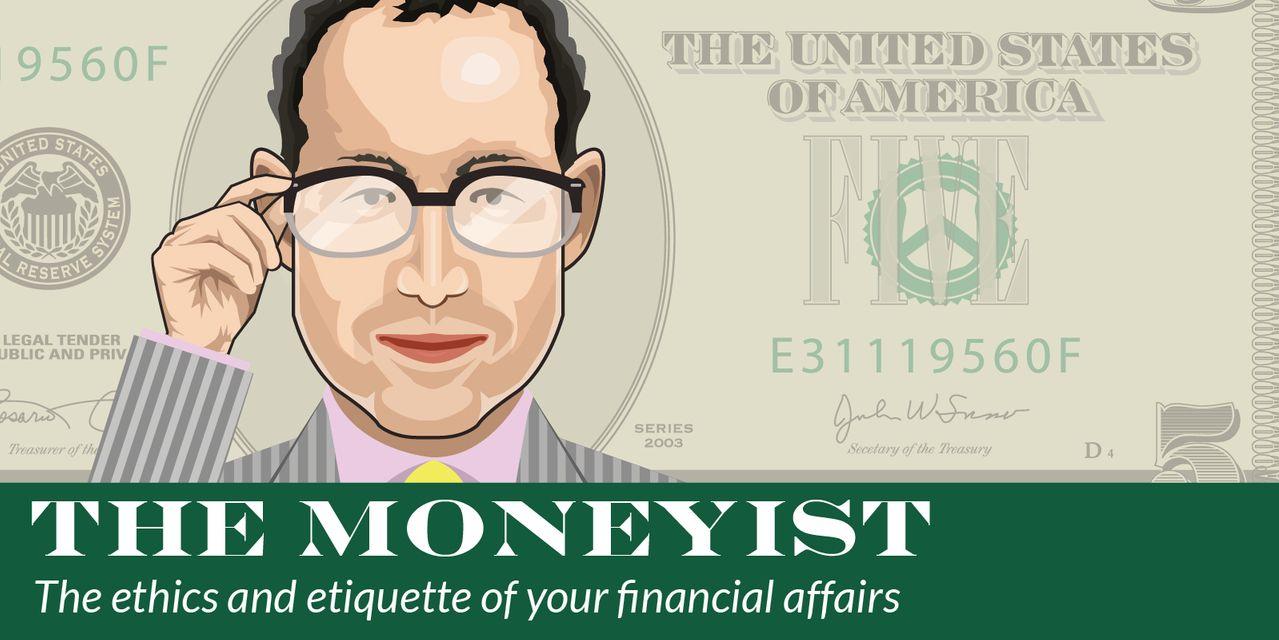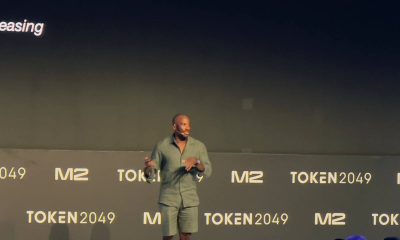Uncategorized
‘I am a 53-year-old single man with very little savings’: I want to take out a 30-year mortgage, but pay it off in 7 years. Is that possible?

I am a 53-year-old single man with very little in savings. I paid off all my credit-card debt a couple of years ago. I have now decided to purchase a home. My rent has increased to the point where it is almost as much as a mortgage, and that is why I am purchasing a home. I am trying to pay off the mortgage as quickly as possible.
My credit-union credit card allows me to make a balance transfer at 0% financing with no fee once a year. It is a very high credit limit, and I was thinking of taking that and putting it on the mortgage as a way of paying off the mortgage sooner, rather than making extra payments every month to the mortgage company.
If I do it this way, I can pay off the card during the year, and save a lot of interest on the mortgage. My calculations for paying a weekly principal payment means the house could be paid off in less than seven years. I believe it would be a little better with making a large up-front payment. Just wanted to know your thoughts on this matter.
Here are my figures: a $260,000 mortgage over 30 years with monthly payments of $1,390 a month. If I pay an extra $2,500 a month, I can pay it off in about seven years. But paying $25,000 once a year may be a little faster.
Would-be Home Buyer
Dear Would-be Home Buyer,
First, let’s talk about your plan in principle: By taking out a 0% loan on your credit-union credit card for your downpayment, you are robbing Peter to pay Paul. But in this case, you are both Peter and Paul. I’m sorry to get all Dostoevsky on you, but you need to tread carefully, as you risk committing yourself to both a mortgage and a loan. If you fall behind on the latter, you will likely face hefty repayments when that 0% interest ends.
In practice, your bank in all likelihood (I can say with 99.999% certainty) won’t accept a credit-card payment as a down payment. Your financial institution wants to know that your credit and bank account is healthy. The down payment is a vote of confidence in that, and should come from your savings rather than your credit card. When you apply for a loan, the bank will also conduct a forensic examination of your finances before agreeing to a mortgage.
I’m not the only one to sound warning bells. “Dangerous Curves Ahead!” says David Waltzer, a New York-based bankruptcy lawyer. “What happens when you are late with just one payment, and that zero-interest rate jumps up to 18%? What happens when you have another rough period and can’t pay off the card on time? Even if you make all the payments perfectly on time, these credit-card companies do a regular review of your credit.”
Credit-card companies also have a lot of small print. “You plan to transfer a low-balance debt to another low-balance card. But what happens when that new low-interest offer never arrives? Now you are unable to make credit-card payments — and you will struggle with the mortgage as well,” Waltzer adds. “I have filed tens of thousands of bankruptcies in New York and New Jersey. Many of them were for people who tried to do what you are describing.”
David B. Rosenstrock, founder and director of Wharton Wealth Planning in New York, warns about the impact on your credit score. “According to myFICO.com, 30% of your FICO
FICO,
score is based on data that includes your utilization ratio,” he said. “Credit-utilization rate means the amount of your available credit that you are using at the time your score is calculated. You want to keep this utilization under 10% if your goal is to keep your score well into the 700s.”
What’s more, investing in a down market can also pay dividends, assuming you have time for shares to recover, and have the tolerance to withstand further falls. “A 30-year mortgage gives you 30 years to outperform your mortgage rate,” Rosenstrock said. “In general, you shouldn’t neglect retirement account contributions to pay off your mortgage on an advanced timeline. It is also important to always maintain an emergency reserve. Paying down your mortgage too fast at the expense of your emergency savings reserve can create problems if unanticipated events occur.”
“‘You are robbing Peter to pay Paul. But in this case, you are both Peter and Paul. I’m sorry to get all Dostoevsky on you, but you need to tread carefully.’”
Your base monthly repayments look slightly optimistic. Talk to a financial adviser about your goals, and your reason for becoming a homeowner. The big missing piece here is your salary and, to a lesser extent, the prospect of an inheritance. Please seek the advice of an adviser before jumping in. Lay your finances, your hopes and your dreams bare, especially where you would like to be when you reach retirement age, and whether you see yourself working beyond the traditional retirement age.
I fully support your wish to buy a home. Let’s say you work for another 15 to 20 years: You will not only have gained that equity in your home with your monthly mortgage payments, but your home will also presumably — or very likely — have risen in value over that time, giving you more options should you wish to cash out and move to a smaller home. With inflation and, hopefully, a higher salary, you may also find that your mortgage payments become manageable.
You’re 53. You don’t have to pay this loan off in seven years, and you don’t need to rack up extra debt. If your mortgage servicer allows it, paying off a regular amount on your mortgage — given that you are simultaneously paying off interest — can be more effective than an annual lump sum. For those who can afford to pay extra, both are a good idea as long as you ensure you have necessities such as an emergency fund.
“If the goal is to pay down the mortgage faster, ask your mortgage lender if you’re able to make additional principal-only payments and if there are any pre-payment penalties,” says Jennifer Weber, vice-president, financial planning at Weber Asset Management. “A principal-only payment would help save on interest and allow you to pay off your mortgage early. If allowed, you can increase your monthly payments or make larger annual lump-sum payments directly to the mortgage company.”
Waltzer is more circumspect on the benefits of home ownership than I am. He warns that your mortgage interest rate could also exceed 5% if you have a low credit score. “Home ownership costs are always more than expected,” he adds. “If you are purchasing a $260,000 house, I presume you will put 10% down ($26,000). But closing costs will be quite a bit more. So, you are probably looking closer to $40,000. Is that going to be wrapped into your mortgage?”
Greg McBride, chief financial analyst at Bankrate.com, adds, “Owning a home carries a lot of expenses beyond the regular monthly mortgage payment and it is those irregular, unplanned, and sometimes significant expenses that can undermine financial progress. The best antidote to that — and especially for someone who has had credit-card debt in the past — is to build up an emergency savings cushion. Without adequate emergency savings, even the best laid plans are one unplanned expense from failure.”
Lay out all of your options: 15 years vs. 30 years; the pros and cons of paying extra versus saving that money; insurance and property taxes; house repairs; closing costs; and potential bidding wars. The shorter the term — a 15-year mortgage rather than a 30-year mortgage — the lower the interest payment. Still, rates are rising: Monthly mortgage payments with a 30-year mortgage rate and a 20% down payment are roughly 50% more expensive than they were a year ago.
And, finally, the Moneyist is an optimist (most of the time): You may not be single forever.
Check out the Moneyist private Facebook group, where we look for answers to life’s thorniest money issues. Readers write in to me with all sorts of dilemmas. Post your questions, tell me what you want to know more about, or weigh in on the latest Moneyist columns.
The Moneyist regrets he cannot reply to questions individually.
By emailing your questions, you agree to having them published anonymously on MarketWatch. By submitting your story to Dow Jones & Company, the publisher of MarketWatch, you understand and agree that we may use your story, or versions of it, in all media and platforms, including via third parties.
Also read:
‘She has a poor work ethic’: I rent out rooms in a single-family home. I charge $1,300 per room, but my sister only pays $800. Should I ask her to pay more?
Uncategorized
BofA Securities maintains Amazon.com at ‘buy’ with a price target of $154.00
Uncategorized
Six people in critical condition, one still missing after Paris blast – prosecutor

5/5
© Reuters. French firefighters and rescue forces work after several buildings on fire following a gas explosion in the fifth arrondissement of Paris, France, June 21, 2023. REUTERS/Gonzalo Fuentes
2/5
PARIS (Reuters) – Six people remained in a critical condition and one person was believed still missing on Thursday, one day after a blast ripped through a street near Paris’ historic Latin Quarter, the city’s public prosecution office said. “These figures may still change,” prosecutor Maylis De Roeck told Reuters in a text message, adding that around 50 people had been injured in the blast, which set buildings ablaze and caused the front of one to collapse onto the street. Of two people initially believed missing, one has been found in hospital and is being taken care of, the prosecutor said, adding: “Searches are ongoing to find the second person.” Authorities have not yet said what caused the explosion, which witnesses said had followed a strong smell of gas at the site. The explosion led to scenes of chaos and destruction in the historic Rue Saint Jacques, which runs from the Notre-Dame de Paris Cathedral to the Sorbonne University, just as people were heading home from work. It also destroyed the facade of a building housing the Paris American Academy design school popular with foreign students. Florence Berthout, mayor of the Paris district where the blast occurred, said 12 students who should have been in the academy’s classrooms at the time had fortunately gone to visit an exhibition with their teacher.
“Otherwise the (death toll) could have been absolutely horrific,” Berthout told BFM TV. She said three children who had been passing by at the time were among the injured, although their lives were not in danger.
Uncategorized
4 big analyst cuts: Alcoa & DigitalOcean shares drop on downgrades

© Reuters.
Here is your Pro Recap of the biggest analyst cuts you may have missed since yesterday: downgrades at Alcoa, DigitalOcean, Teleflex, and Xcel Energy.InvestingPro subscribers got this news in rapid fire. Never be left in the dust again.Alcoa stock drops on Morgan Stanley downgrade Alcoa (NYSE:) shares fell more than 3% pre-market today after Morgan Stanley downgraded the company to Underweight from Equalweight and cut its price target to $33.00 from $43.00, as reported in real time on InvestingPro.The firm sees a significant decline in consensus estimates, and as negative earnings revisions materialize, it believes the stock will face downward pressure and underperform.The analyst’s estimates for EBITDA in Q2, 2023, and 2024 are substantially lower than the consensus. The stock is currently trading above its historical average. The firm said its downward revisions in earnings estimates and price target are attributed to the company’s high operating leverage to aluminum prices.DigitalOcean stock plunges on downgradePiper Sandler downgraded DigitalOcean (NYSE:) to Underweight from Neutral with a price target of $35.00. As a result, shares plunged more than 5% pre-market today.The company reported its last month, with revenue beating the consensus estimate, while EPS coming in worse than expected. Furthermore, the company provided a strong outlook, which was above the Street estimates.2 more downgradesTeleflex (NYSE:) shares fell more than 3% yesterday after Needham downgraded the company to Hold from Buy, noting that UroLift expectations may still be too high.According to Needham, their checks indicate that urologists are reducing their use of UroLift due to its retreatment rates, reimbursement cuts, and increasing use of competing procedures. This is also supported by their Google Trends data analysis, which indicates decreasing search interest in UroLift.BMO Capital downgraded Xcel Energy (NASDAQ:) to Market Perform from Outperform and cut its price target to $64.00 from $69.00 to reflect the lower-than-expected terms of the company’s regulatory settlement in Colorado.Amid whipsaw markets and a slew of critical headlines, seize on the right timing to protect your profits: Always be the first to know with InvestingPro.Start your free 7-day trial now.

 Forex2 years ago
Forex2 years agoForex Today: the dollar is gaining strength amid gloomy sentiment at the start of the Fed’s week

 Forex1 year ago
Forex1 year agoUnbiased review of Pocket Option broker

 Forex2 years ago
Forex2 years agoHow is the Australian dollar doing today?

 Forex2 years ago
Forex2 years agoDollar to pound sterling exchange rate today: Pound plummeted to its lowest since 1985

 Cryptocurrency2 years ago
Cryptocurrency2 years agoWhat happened in the crypto market – current events today

 World1 year ago
World1 year agoWhy are modern video games an art form?

 Stock Markets2 years ago
Stock Markets2 years agoMorgan Stanley: bear market rally to continue

 Economy2 years ago
Economy2 years agoCrude oil tankers double in price due to EU anti-Russian sanctions


































